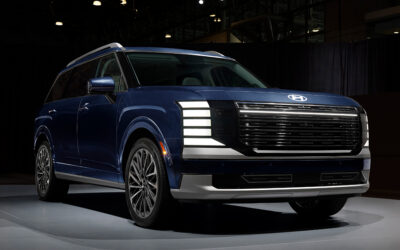Hyundai Motor Group showcased its cutting-edge hybrid technology at the “Next-Gen Hybrid System Tech Day”held at Crest 72 in Jung-gu, Seoul. Under the theme “Well-Balanced High Tech & Expanded xEV Experience,” the company introduced a groundbreaking hybrid system that significantly enhances both performance and efficiency.
Revolutionizing Hybrid Technology with a Dual-Motor Transmission
At the core of Hyundai’s next-generation hybrid system lies a newly developed transmission equipped with two motors — a drive motor (P2) for propulsion and regenerative braking, and a starter generator motor (P1) for starting, power generation, and drive assistance. This P1+P2 parallel structure boosts fuel economy, smoothens gear transitions, and minimizes noise and vibration.
The new hybrid transmission also increases torque capacity from 37.4kgf·m to 46.9kgf·m — a 25% improvement — making it compatible with high-displacement turbocharged engines. Despite these upgrades, the transmission retains its compact size, enabling seamless integration across a wide range of vehicle segments.

Introducing the High-Efficiency 2.5 Turbo Hybrid Engine
The first application of the next-gen system is the 2.5L Turbo Hybrid Engine, redesigned for optimal thermal efficiency. By eliminating conventional components like the main belt, alternator, and air conditioning compressor, the engine reduces parasitic losses.
A key innovation is the adoption of the over-expansion cycle, which delays the intake valve closure to maximize combustion efficiency. Additional upgrades include a redesigned piston shape and triple-stage fuel injection, enhancing power, fuel economy, and suppressing engine knocking.
Outstanding Performance and Fuel Efficiency
Hyundai’s new hybrid system offers a 45% improvement in fuel efficiency and a 19% increase in maximum power output compared to its ICE counterpart. For example, the 2.5 Turbo Hybrid in the Palisade SUV achieves:
- Fuel economy: 14.1 km/L
- Max power: 334 hp
- Max torque: 46.9 kgf·m
Meanwhile, the 1.6 Turbo Hybrid for mid-size SUVs shows a 4.3% fuel efficiency improvement and better acceleration response, thanks to increased torque capacity and a refined Active Shift Control (ASC) logic.

Elevating the In-Vehicle Experience with EV-Inspired Features
The new hybrid lineup features technologies typically found in electric vehicles, enhancing user convenience and performance:
- e-AWD (Electronic All-Wheel Drive): Adds a rear motor for enhanced acceleration and control
- e-VMC 2.0 (Vehicle Motion Control): Enables advanced driving dynamics via torque vectoring
- Stay Mode: Lets users enjoy climate and media systems while parked, engine-off
- V2L (Vehicle-to-Load): Delivers up to 3.6kW for powering external devices during camping or emergencies
- Smart Regenerative Braking & HPC (Hierarchical Predictive Control): Optimize energy recovery and drive modes based on route and conditions
Expanding the Hybrid Lineup from Compact to Luxury
Hyundai plans to combine the new transmission with various engine types to create a wide output range—from just over 100 hp to mid-300 hp—suitable for everything from small cars to luxury vehicles.
The Palisade Hybrid, launching this month, will be the first model to feature the 2.5 Turbo Hybrid system. Additional Hyundai and Kia models will follow, including Genesis models starting in 2026 with a rear-wheel-drive hybrid setup.





